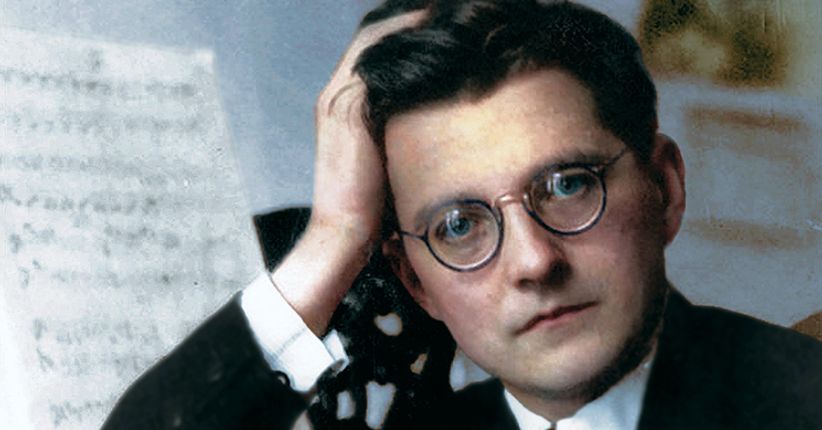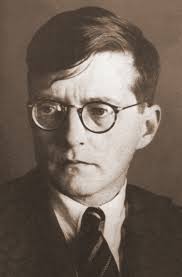Dmitri Shostakovich (1906-1975) stands as one of the most influential composers of the 20th century, known for his intense, complex, and often politically charged music. His works reflect the tumultuous times of Soviet Russia, weaving personal expression with public commentary. Here’s a closer look at ten of his most celebrated compositions:
1. Symphony No. 5 in D Minor, Op. 47 (1937)
Overview: Premiered in 1937, this symphony marked Shostakovich’s return to public favor after his denunciation in 1936. Often seen as a response to the criticism he faced, the work balances compliance with the demands of Socialist Realism and personal expression.
Highlights:
- First Movement: A powerful sonata form with a dramatic opening and a reflective central theme.
- Finale: Celebrated for its triumphant yet ambiguous ending, often interpreted as a subtle critique of Soviet oppression.
Impact: The symphony’s premiere was a massive success, solidifying Shostakovich’s status and pleasing both the public and the authorities.
2. String Quartet No. 8 in C Minor, Op. 110 (1960)
Overview: Dedicated “to the victims of fascism and war,” this quartet is one of Shostakovich’s most personal works, reflecting his despair and struggles under the Soviet regime.
Highlights:
- First Movement: Features the D-S-C-H motif, a musical representation of his name.
- Second Movement: Contains violent, aggressive rhythms symbolizing the horrors of war.
- Final Movement: A melancholic and introspective ending, mirroring a sense of resignation.
Impact: The quartet has become a staple of the chamber music repertoire, admired for its emotional depth and structural complexity.
3. Symphony No. 7 in C Major, Op. 60 “Leningrad” (1941)
Overview: Composed during the siege of Leningrad in World War II, this symphony became a symbol of Soviet resistance against Nazi invasion.
Highlights:
- First Movement: Contains the famous “invasion theme,” representing the Nazi attack, with a bolero rhythm that grows increasingly intense.
- Finale: A hopeful and victorious conclusion, resonating with the resilience of the human spirit.
Impact: The symphony’s broadcast and performances during the war inspired hope and solidarity, becoming a cultural symbol of the Soviet struggle.
4. Symphony No. 10 in E Minor, Op. 93 (1953)
Overview: Written shortly after Stalin’s death, this symphony is often seen as Shostakovich’s personal reflection on the dictator’s oppressive regime.
Highlights:
- Second Movement: Allegedly a musical portrait of Stalin, marked by its brutal and relentless energy.
- Finale: Balances triumph and tension, symbolizing the composer’s cautious optimism for the post-Stalin era.
Impact: Regarded as one of Shostakovich’s greatest symphonies, it explores themes of oppression and release with profound emotional depth.
5. Piano Concerto No. 1 in C Minor, Op. 35 (1933)
Overview: Known for its humor and eclectic style, this concerto features a prominent trumpet part and a fusion of various musical genres.
Highlights:
- First Movement: Combines neoclassical elements with jazz influences.
- Finale: A lively, almost chaotic conclusion, highlighting Shostakovich’s wit and virtuosity.
Impact: The concerto remains popular for its unique character and engaging interplay between the piano and trumpet.
6. Symphony No. 13 in B-flat Minor, Op. 113 “Babi Yar” (1962)
Overview: Setting the poetry of Yevgeny Yevtushenko, this symphony addresses themes of anti-Semitism, Soviet bureaucracy, and human suffering.
Highlights:
- First Movement: “Babi Yar,” a powerful denunciation of anti-Semitism, based on the poem about the Nazi massacre at Babi Yar.
- Final Movement: Reflects on the broader human struggle against injustice.
Impact: The symphony was controversial and initially faced censorship, but it has since been recognized for its courageous social commentary and musical depth.
7. Symphony No. 9 in E-flat Major, Op. 70 (1945)
Overview: Contrary to expectations of a grandiose victory symphony after World War II, Shostakovich’s Ninth Symphony is light, ironic, and classical in style.
Highlights:
- First Movement: A lively and playful Allegro, full of wit.
- Finale: A brisk and energetic conclusion, contrasting with the more somber and monumental expectations of the time.
Impact: Initially met with confusion and criticism, the Ninth Symphony is now appreciated for its humor and subtle critique of authoritarian expectations.
8. Piano Quintet in G Minor, Op. 57 (1940)
Overview: Written for piano and string quartet, this quintet is celebrated for its clarity, structural precision, and emotional range.
Highlights:
- First Movement: A brooding Prelude with a fugal Allegro.
- Finale: A lively and uplifting conclusion, demonstrating Shostakovich’s mastery of chamber music.
Impact: The quintet won the Stalin Prize and remains a cornerstone of the chamber music repertoire for its combination of accessibility and depth.
9. Lady Macbeth of the Mtsensk District, Op. 29 (1934)
Overview: This opera, based on a novella by Nikolai Leskov, portrays the tragic story of a woman driven to murder by her oppressive circumstances.
Highlights:
- Aria: Katerina’s emotional arias reveal her inner turmoil and desperation.
- Orchestration: Innovative use of orchestration to depict intense psychological states and social criticism.
Impact: Initially successful, the opera was later denounced by Stalin, leading to Shostakovich’s temporary fall from favor. It has since been revived and is celebrated for its boldness and dramatic power.
10. Cello Concerto No. 1 in E-flat Major, Op. 107 (1959)
Overview: Written for Mstislav Rostropovich, this concerto is known for its innovative use of the cello and its deeply expressive character.
Highlights:
- First Movement: Features a compelling four-note motif that recurs throughout the concerto.
- Finale: Combines virtuosity and introspection, showcasing the cello’s full expressive range.
Impact: The concerto is a favorite among cellists and audiences for its technical challenges and emotional intensity.
Conclusion:
Dmitri Shostakovich’s compositions are marked by their emotional depth, innovative structures, and often subversive political undertones. His ability to convey personal and societal struggles through music has cemented his legacy as one of the most important composers of the modern era. From his symphonies and string quartets to his concertos and operas, Shostakovich’s works continue to captivate and challenge listeners worldwide.


Comments are closed